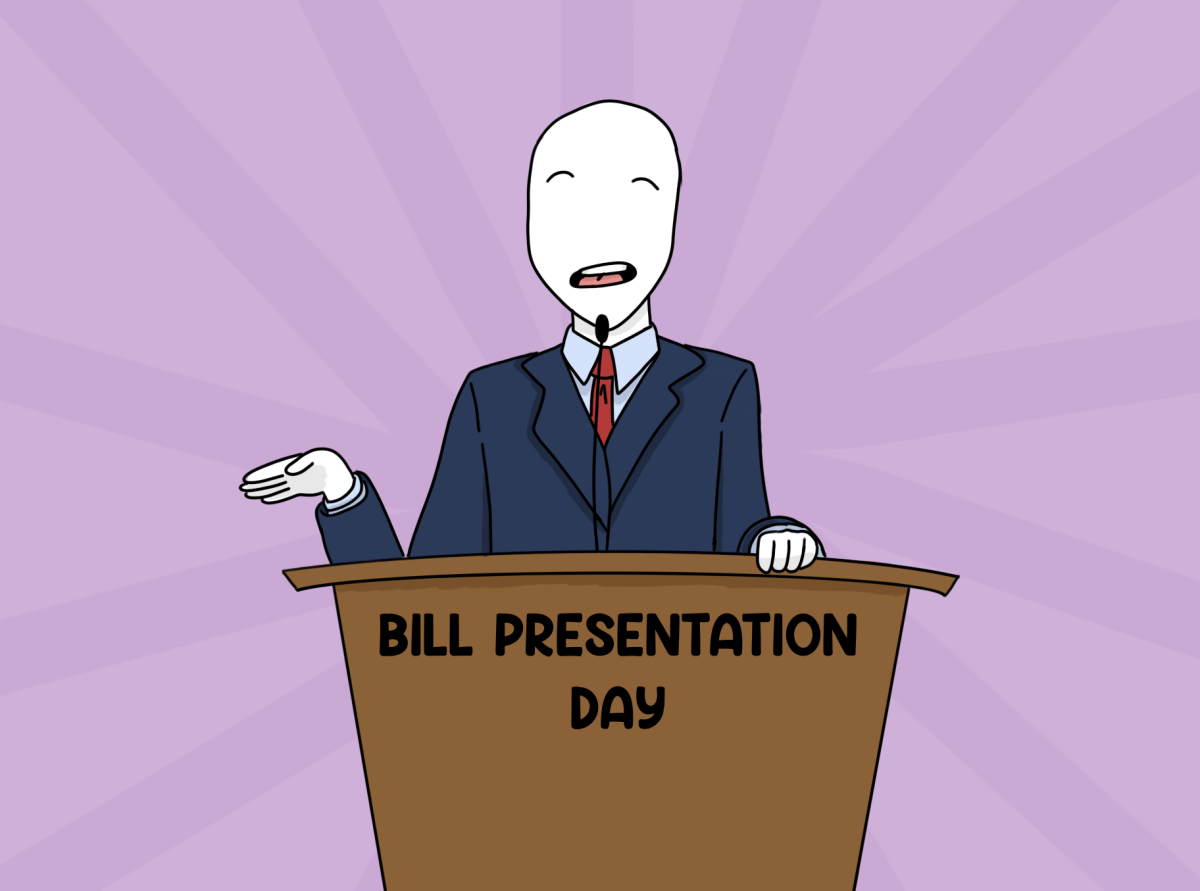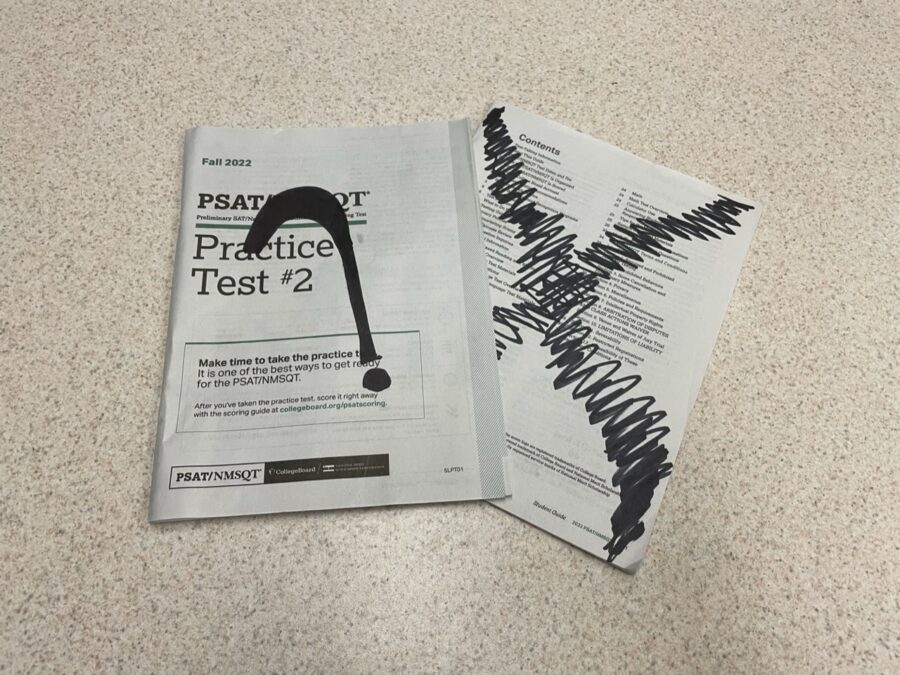Opinion: It’s time to ditch the SAT
A PSAT practice test packet sits on a desk. The legitimacy of the SAT test has been called into question in recent years due to its rocky past.
April 5, 2023
One day out of the year, the halls of Hayes are silent.
Students sit in rapt attention at their computers, but not by choice or passion—that silence means it’s SAT season.
Both students and teachers feel the pressure early on; January through March of junior year are often underscored by last-minute cramming and costly testing preparations.
However, this process may not be worth the hassle.
SAT testing is not the best way, and is certainly not the only way, to measure how students are performing in the classroom.
It’s time for schools to reconsider the necessity of the SAT test.
Pencils Down
Standardized testing has its roots in the economic refurbishment of the industrial revolution, where schools shifted priorities from educating the wealthy to preparing the masses to enter the workforce.
Despite pushback from the conservative pundits of the time, work became more than just labor, and the industrial revolution sparked more than just economic advancement. The federal government took an interest in ensuring that this boom of educated, specialized citizens remained fundamental to the improvement of American society. Enter standardized testing.
States began mandating the administration of written and oral exams to students in order to measure the efficacy of schools.
However, this second enlightenment proved less than beneficial for those who historically faced significant barriers to education, like people of color, and those with lower socioeconomic status.
One pioneer of industrial-era schooling, Carl Brigham, championed the use of eugenics in education to “ensure the superiority of the Nordic race group.”
In fact, Brigham developed U.S. Army aptitude tests, which were then rebranded as the Scholastic Aptitude Test as World War I drew to a close.
One fundamental aspect of the SAT, when basic education was available even in the poorest of communities, was that it measured intelligence rather than course mastery.
Intelligence was also considered heavily linked with ethnicity and race, suggesting that colleges’ decision to shift towards admittance exams like the SAT were motivated by a presumed need to limit the abilities of underrepresented groups within the education system.
The truth is that all variations of the SAT, even as it evolved alongside an increasingly flexible and diverse schooling system, have failed in delivering on their promise to evaluate students on merit alone.
Instead, the test does not shy away from its eugenics-fueled framework as it reveals gaps in educational resources, financial resources and race. All of this encourages colleges to remain institutions embroiled in elitism—institutions forever molded by the rich, white hands of eugenicist scholars in order to atrophy the upward mobility of Black and brown communities.
Test Out
Common Core was introduced in the era of No Child Left Behind, the bill which sought to improve curriculum for K-12 education, and bring all states up to a national standard on par with other developed nations.
However, the post-Common Core generation is the most tested and the most anxious generation in recent years. This is not a coincidence, as studies have repeatedly shown that more testing leads to excessive feelings of worry and frustration among students.
Therefore, changes made to the SAT in order to comply with Common Core standards, in addition to college readiness standards, induce and exacerbate feelings of anxiety among students.
In addition, Common Core has been proven to set up students for failure. Regulations requiring teachers to prioritize what may or may not be on a standards-based test leaves students unprepared for further academic development.
Overall, tests aligned with the Common Core curriculum, like the state-mandated SAT, are less likely to give districts insight into students who are struggling to grasp material, and more likely to reveal the caverns of economic inequality between zip codes.
If this system has been proven to demonstrate the exclusive, pompously rich, privileged nature of higher education, then school districts should work to phase out the SAT.
Until then, the lingering stench of eugenicists like Brigham will continue to leave poor, Black and brown communities in the dust, and perpetuate the rich, white college standard.








































